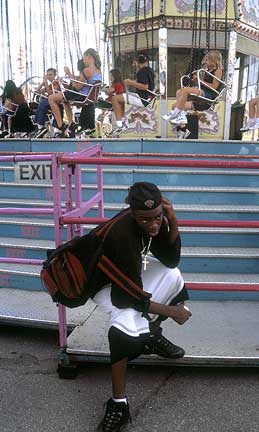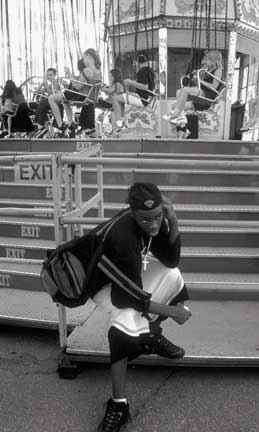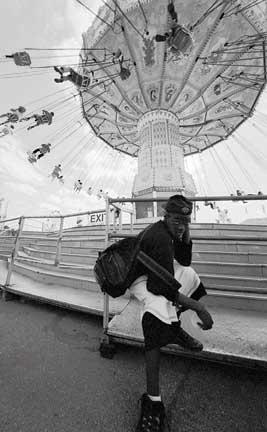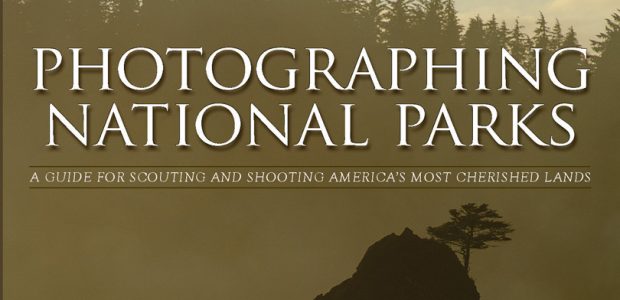Variations on a Theme
This article explores variations in three aspects of photography‚ the option of converting a colour original into a B&W print; how to "work" a photographic situation so as to explore the variations that different lenses can produce on perspective, and as well, how a short passage of time can dramatically change the context of a composition.
Colour Vs Black & White
Though I use colour film 99% of the time when doing landscape and nature photography I usually prefer to shoot in B&W when doingdocumentary or street shooting.
I recently spent an afternoon shooting at acountry fair, but as I began found that the camera bodies that I was using were both already loaded with transparency film. Rather than waste the balance of the rolls I simply shot with them until they were done. The frames below were the only ones on these rolls that I liked, in fact I liked them a lot. But I found that the use of colour doesn’t contribute much to the composition. The pale blue of the stairs, the magenta railing and the red of the straps on the boy’s backpack simply look pretty in colour, though the latter do act as graphic elements in the composition.
So, I usedChannel MixerandDuotonesto turn it into a B&W print. I find this captures the "mood" of what I was seeing much better than the original colour image, and by using the Red channel only I was able to accentuate the red straps so that their role as graphic elements is enhanced, just as if I had used a red filter while shooting B&W film.
Photographed with a Leica M6 and f/4 Tri-Elmar lens (@ 28mm) on Provia 100F
Working The Scene
Leftmost frame photographed with a Voigtlnder Bessa-T and 12mm Heliar on Provia 100F.
I had two camera bodies over my shoulder, one equipped with theLeica Tri-Elmar(a 28-35-50mm zoom for the M series Leica), set for this shot at 28mm, and the other with theVoigtlnder 12mm Heliar. The above frames were taken within minutes of each other and illustrate quite dramatically both how different a subject’s perspective is rendered by such different angles of coverage, and also how incredibly wide a 12mm lens is compared to a 28mm, a lens which we usually consider to offer serious wide-angle capability. What makes this comparison so interesting is that the primary subject, the boy, is roughly the same size in both frames, making the perspective comparison all the more valid.(He appears larger in the right-hand frame because he is leaning forward. Look at his front foot and you’ll see that they’re the same size in both shots. For the 12mm image I had to move to about 2 feet away from him, but he still continued to ignore me!)
In addition to illustrating how different lenses render perspective it’s worth seeing how the scene also changed over just a few minutes. From a static situation with the children in the background waiting for the ride to start, the second frame shows them in full flight, creating a stronger juxtaposition with the seated boy and his oh-so-cool attitude. I took about a dozen frames with each lens, but these two were the ones that best captured the two moments.
Which one do you prefer, and why? Your comments on this are welcome on theDiscussion Forum.
You May Also Enjoy...
Photographing National Parks; A Guide For Scouting And Shooting America’s Most Cherished Lands – Book Review
Photographing National Parks; A Guide For Scouting And Shooting America’s Most Cherished Lands by Chris Nicholson Sidelight Books $27.95 US ISBN 978-0-9835038-2-8 As the United




